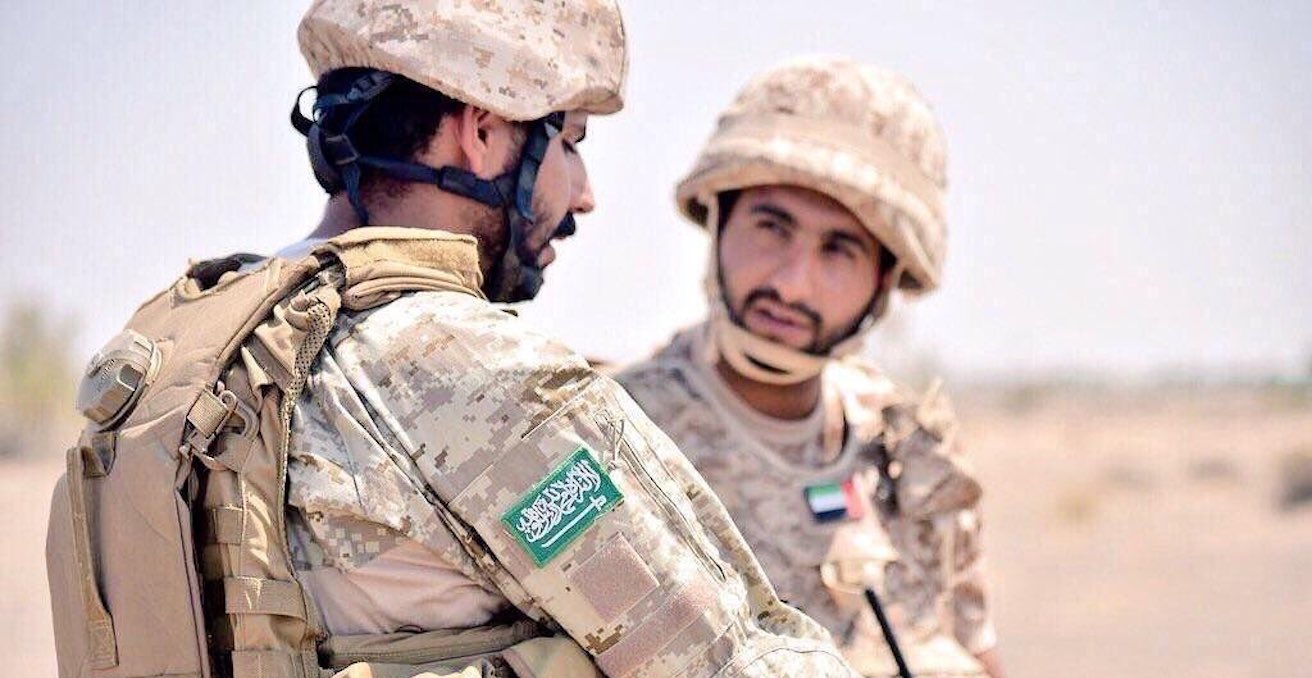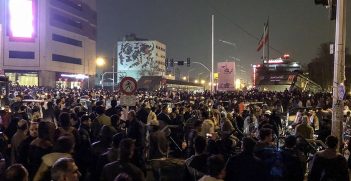The UAE’s Geostrategic Plans in Yemen and the Gulf of Aden

While on the surface the United Arab Emirates is a well-behaved “little brother” to Saudi Arabia, its recent actions in the south of Yemen, the Horn of Africa and the Gulf of Aden show that the UAE is slowly but surely positioning itself to become a formidable regional power independent of the Arab regional hegemon.
On April 30 the United Arab Emirates (UAE) deployed troops to the Yemen-controlled island of Socotra in the Gulf of Aden without approval from the Yemen government or Saudi Arabia. Although a deal was brokered with Yemen and Saudi Arabia on May 14 for the UAE to withdraw from the island, this incursion has highlighted the regional ambitions of Abu Dhabi and the potential for a rift to grow in the UAE-Saudi Arabia relationship.
On the surface, the UAE is explicitly allied with Saudi Arabia, acting as a well-behaved “little brother” to the Arab regional hegemon. However, its recent actions in the south of Yemen, the Horn of Africa and the Gulf of Aden illustrate that the UAE is slowly but surely positioning itself to become a formidable regional power independent of Saudi authority.
In the many ongoing diplomatic and military conflicts in the Middle East, Abu Dhabi has remained united with Riyadh. The UAE has supported Saudi Arabia in its blockade against Qatar as well as siding with Saudi Arabia in pushing for the US to withdraw from the Iran Nuclear Deal. Most importantly, it has contributed to the Saudi-led military campaign against Houthi rebels in the Yemen Civil War. However, Abu Dhabi’s involvement in this disastrous war does not necessarily correlate with Saudi objectives but rather has allowed it to enhance its own geostrategic interests in a volatile region of the Arabian Peninsula.
The UAE in the Yemen Civil War
In 2015 the Saudi-led Coalition, including the UAE, deployed troops in Yemen to influence the civil war in favour of President Abdrabbuh Mansur Hadi and his internationally recognised government against Houthi rebels. For the UAE, however, the conflict in the south of Yemen has become separate to the conflict in the north which is predominantly between the Houthi rebels and Saudi forces. The UAE does not view the Houthis as an existential threat to its own sovereignty in the same way as Saudi Arabia. As the conflict rages and Saudi Arabia struggles to take control of the north of Yemen, the UAE has gained the upper hand by exerting its own policies in the south, favouring groups that guarantee UAE interests and objectives.
Abu Dhabi is now using this conflict to secure its access to the Red Sea and the Gulf of Aden in the south of Yemen. It is taking a more long-term, bottom-up approach by investing in the social politics and economic development of the southern provinces of Yemen in contrast to Saudi Arabia which has constantly changed its strategic alliances in the war. The UAE has set up military bases in the central region of Hadrahmaut and, earlier this year, it established control over the seaport city of Aden, which was seized from the Hadi government by the UAE-backed Southern Transitional Council. This has allowed UAE firms such as DP World to invest in the city’s maritime trade infrastructure and restore operations of the city’s port. However, this has brought UAE interests in direct conflict with Saudi Arabia, which openly supported the Hadi government and Yemen Army during the Battle of Aden in January.
The UAE asserting control of Bab-el-Mandeb and the Gulf of Aden
Asserting control over the city of Aden and the southern part of Yemen through these UAE-backed groups and UAE investment is part of Abu Dhabi’s strategy to control Bab-el-Mandeb, a narrow strait that separates the Red Sea from the Gulf of Aden and therefore a crucial maritime route used to transport goods between Europe, East Africa and Asia. To further this geostrategic goal, the UAE has built an airstrip on Perim, a volcanic island belonging to Yemen located in the centre of the strait.
With only approximately 20 miles separating Ras Menheli in Yemen and Ras Siyaan in Djibouti, the UAE has also sought to further extend control of the strait through its military and economic interests in the Horn of Africa. It controls the Assab naval/airbase in Eritrea which is used to carry out military operations in Yemen. It previously controlled the Djibouti port of Doraleh — seized by the Djibouti government in February 2018 – which has now become a source of tension between the UAE and Djibouti. In the coastal city of Berbera in the self-declared state of Somaliland, Abu Dhabi is building a military base without the approval of the central government in Mogadishu. In the Somali region of Puntland, the UAE is training the maritime police as well as investing in the port of Bosaso.
The UAE incursion on Socotra also illustrates its regional ambitions to control the Gulf of Aden to ensure it reaps the benefits of the free flow of trade through the Gulf. The two-week occupation of the island saw the UAE seize important installations including airport, seaports and government buildings, angering the Hadi government and its Saudi allies. For the UAE, Socotra’s strategic location in the Gulf of Aden not only provides it with an ideal military base to carry out further missions against enemies in Yemen, it also enables the UAE to position itself through investment in the island’s ports to ensure it benefits from the free flow of trade through the Gulf of Aden. Although the UAE and Saudi Arabia agreed on May 14 to end the UAE occupation by returning seized installations to the Yemen government and withdrawing troops from the island, the UAE military invasion of Socotra illustrates the capability and willingness of the UAE to pursue and safeguard its geostrategic interests in the Gulf of Aden.
Room for Saudi-Emirati conflict?
The UAE’s activities in southern Yemen, its influence in the Horn of Africa, and its incursion on the island of Socotra are seen by many as the UAE asserting influence outside its borders independent of Saudi authority. As Saudi and Emirati strategic goals begin to diverge in Yemen and as UAE influence expands in the Gulf of Aden region, Saudi Arabia may view the UAE as another Qatar problem: a traditional “little brother” ally slowly increasing its soft and hard power, challenging Saudi hegemony on the Arabian Peninsula and beyond. This could see Saudi Arabia attempt to pull the UAE back in line.
However with the ongoing devastating war in Yemen and the regional disputes with Qatar and Iran continuing to remain headaches for Riyadh, it is likely unable to prevent the UAE from pursuing its geostrategic interests in Yemen and the Gulf of Aden to the detriment of Saudi interests.
Will McEniry is a former intern with AIIA Victoria and AIIA National Office. He visited Iran in 2017 as part of AIIA VIC’s study tour.
This article is published under a Creative Commons Licence and may be republished with attribution.





